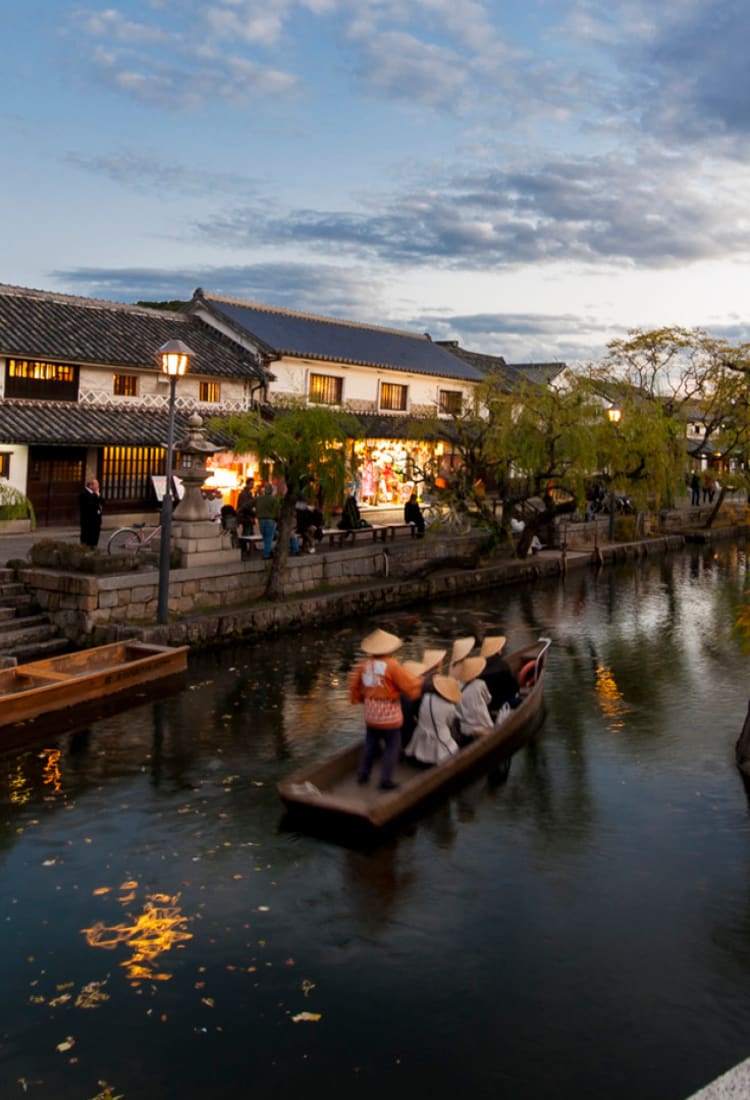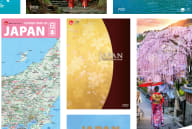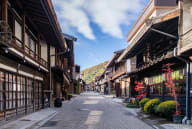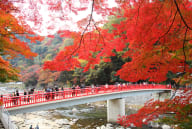
Okayama Where local dishes bloom like peaches
A Culinary Journey in Okayama
Located in the western part of Japan's main island, Okayama Prefecture offers a blend of historical charm, natural beauty, and a rich culinary tradition. Situated along the Seto Inland Sea, the prefecture enjoys a temperate climate with mild winters and warm summers, ideal for cultivating a diverse range of agricultural products and fresh seafood.
Okayama is renowned for its fertile agricultural lands, which produce a variety of fruits, vegetables, and rice. Famous for its high-quality peaches and muscat grapes, Okayama's fruits are prized throughout Japan. Okayama is blessed with a mild climate year-round, often referred to as the "Land of Sunshine." With minimal rainfall and natural disasters, and plenty of sunlight, the conditions are ideal for growing high-quality fruits that excel in both taste and appearance. The prefecture also boasts delicious local specialties like Kibi-dango (Millet dumplings) and Matsuri-zushi, a colourful scattered sushi topped with various fresh ingredients from the nearby sea.
Beyond the stunning sights of Kurashiki Bikan Historical Quarter's stunning traditional architecture, the historic Okayama Castle, and Korakuen Garden, Okayama also offers a distinctive food culture. Delve into its rich background and history while savouring dishes that embody the essence of Okayama's cultural and natural heritage.
Explore the flavours of Okayama and uncover the narratives woven into every dish.
Kibi-dango (Millet dumplings)

What it is (Ingredients)
Kibi-dango are traditional Japanese dumplings made primarily from Kibi (millet) flour and sugar. The dough is kneaded and shaped into small, round dumplings, which are steamed or boiled until they achieve a soft, chewy texture. Kibi-dango are often skewered for serving, making them convenient for snacking or as a sweet treat.
History/Origin
Originating from Okayama, Kibi-dango has a history dating back to ancient times, when millet was a staple crop in the prefecture. The dumplings were traditionally prepared as a humble offering at temples and shrines, symbolizing simplicity and purity. Today, Kibi-dango remains a beloved local delicacy, celebrated for its timeless flavour and cultural significance. Kibi-dango is renowned for its role in the Japanese fairy tale "Momotaro," where a boy born from a peach gives Kibi-dango to animal companions to gain their loyalty on his quest to defeat ogres.
Where to Eat
Kibi-dango can be found in specialty shops, traditional confectionary stores, and festivals throughout Okayama prefecture. It is also famous as a souvenir from Okayama, with many souvenir shops selling packaged versions.
When to Eat
Kibi-dango is enjoyed year-round. Its soft, mildly sweet flavour makes it a delightful treat for children and adults.
Savour the timeless charm of Okayama's Kibi-dango, a testament to the prefecture's rich agricultural heritage and dedication to preserving traditional flavours.
Kakioko (Savoury pancake with oysters)

What it is (Ingredients)
Kakioko is a savoury pancake dish from Okayama, renowned for its generous use of fresh oysters. The pancake batter typically includes flour, eggs, dashi, and grated yamaimo (Japanese mountain yam), creating a light and fluffy texture. Fresh local oysters are mixed into the dough, followed by green onions and often shredded cabbage, infusing it with a rich seafood flavour.
History/Origin
Kakioko originated in Okayama's coastal areas, where oyster farming has been a traditional industry for centuries. The dish emerged to showcase the prefecture's prized oysters, combining them with simple, locally sourced ingredients to create a satisfying and flavourful pancake. Kakioko's popularity has grown beyond Okayama, becoming a celebrated dish highlighting the area's culinary heritage.
Where to Eat
Kakioko is prominently featured in restaurants and Izakaya (Japanese-style pubs) in the major cities throughout Okayama Prefecture, particularly in the coastal town of Hinase, where Kakioko was born.
When to Eat
Kakioko peaks from fall to spring, when oysters are at their best. However, it is available throughout the year, providing a comforting and flavourful option for both locals and tourists exploring Okayama's culinary offerings.
Delight in the delicious blend of fresh oysters and flavourful pancakes with Okayama's exquisite Kakioko, where you can enjoy the flavour of juicy oysters packed with minerals from the Seto Inland Sea.
Matsuri-zushi (Scattered sushi)

What it is (Ingredients)
Matsuri-zushi, also known as scattered sushi, is a traditional dish from Okayama. It consists of vinegared rice topped with a colourful array of ingredients such as thinly sliced omelette, shrimp, pickled lotus root, seasoned and simmered mushrooms and vegetables, and sometimes fresh seafood like Spanish mackerel and conger eel. The ingredients are arranged artfully over the sushi rice, creating a dish that’s as vibrant as it is flavourful.
History/Origin
Matsuri-zushi has its origins in the local festivals of Okayama, where it was originally prepared as a portable, easy-to-eat meal for festival-goers. Over time, it evolved into a beloved local specialty that showcases Okayama's agricultural abundance and appreciation for fresh, seasonal ingredients.
Where to Eat
Matsuri-zushi can be enjoyed at sushi restaurants and traditional Japanese eateries throughout Okayama prefecture. It is often served during special occasions such as festivals, and as part of celebratory meals, reflecting its cultural significance among locals.
When to Eat
Matsuri-zushi is a versatile dish enjoyed year-round, although it is popular during local festivals and celebrations. Its colourful presentation and diverse flavours make it a delightful choice for both casual dining and formal gatherings.
Experience the wisdom and time-honoured traditions of Okayama's locals with Matsuri Sushi, a culinary treasure that combines the flavours of fresh seafood and mountain produce.































































